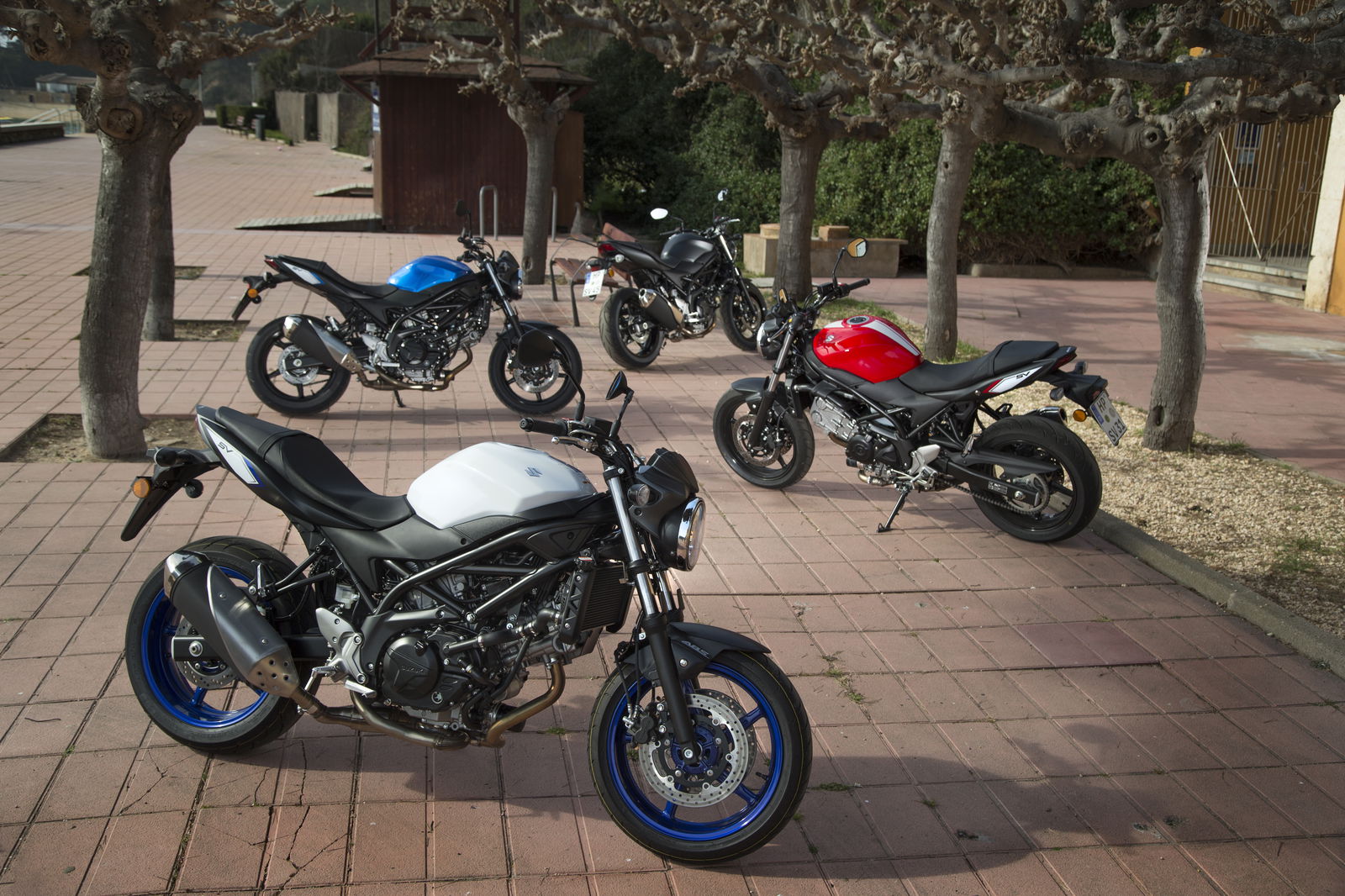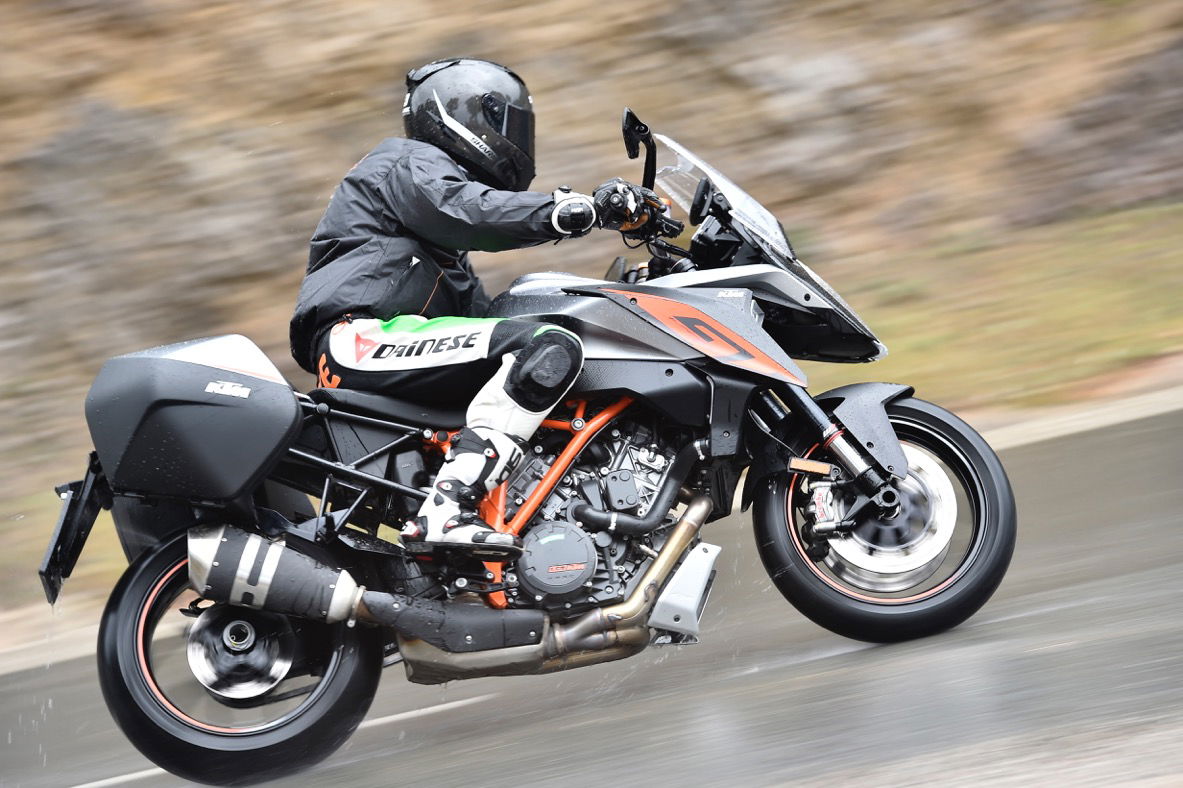2016 SV650 review
The 2016 SV650 isn't quite the bold aluminium-framed naked sportster it was when it first launched, but it's still endowed with a big sense of fun, especially for new riders.


Updated Gladius/SFV650 or a fresh model? Call it what you want, it doesn't matter when the 2016 SV650 is this good.
Following its release in 1999, it didn’t take long for the SV650 to become one of the pillars of Suzuki’s range and within a year it was the second biggest selling bike in Europe (behind the Bandit, no less). People loved the SV for its versatile and capable character; from touring to back lane scratching to commuting and even racing, the SV lapped it up.
Over time, the naked SV became the Gladius (or SFV650 as it’s now called), sprouting a headlight that always makes me think of a bulbous hooter and gaining softer lines. Now it’s being put out to pasture because Suzuki is replacing it with this new SV650. The only thing separating the SFV and SV is the absence of one letter, so we went to Barcelona to see if this new bike is just an updated Gladius or a new SV, and whether it matters.
Take a walk round the new SV and there’s no mistaking that it’s a basic bike, but thanks to its 645cc liquid-cooled DOHC V-twin engine, within a few minutes of thumbing the one-press start button, I was pleased to find out that I was in for an experience that was more than the sum of the SV’s parts.

The engine, with its new airbox, coated pistons, 10-hole injectors and new exhaust system is undoubtedly the bike’s centrepiece. The configuration makes the SV unique among its competitors, where two of the popular players from Yamaha (in the MT-07) and Kawasaki (in the ER-6n) use parallel twins instead of the inline-four found in Honda’s CB650F. With a claimed 75hp (5hp more than the SFV) and 47 lb/ft torque on tap, there's fun to be had, even though the SV tips the scales at 197kg compared to the MT’s 182kg. The engine is a great balance of smoothness and character, and more memorable than the motor in the MT.
Part of the reason for that is because it sounds so good. As well as working on the airbox so it contributes to more power higher up the rev range, Suzuki’s engineers have also spent time making sure it makes a half decent induction noise. They’ve done a good job – with the revs around 5,000rpm, the new SV650 gurgles like Chewbacca and even the stock exhaust doesn’t sound too sad.
On the road, the SV feels punchy and while power begins to build from around 3,000rpm, it’s best to keep the motor spinning between 5,000 and 8,000rpm, which is where power from the roarty-sounding engine is always within easy reach. It’s also got enough to torque to be lazy with it and will tolerate running a gear or two too high without much too much protesting. This flexibility, combined with the way it can potently drive forward at the drop of a hat, is one of the key reasons why the new SV650 is such versatile and fun bike.

It also benefits from sweet fuelling and a peachy throttle response, both of which came into their own on the countless never-ending curves on the roads leading up the Costa Brava from Lloret de Mar. The SV was enormous fun here and although it lacks techy traction controlling trinkets, they weren’t missed because the SV is such a simple and pure, fun loving bike. It really revelled in being turned in and fired out of bends with increasing gusto on my part as I pushed more and more as the day went on. The engine can’t take all the glory here however, because the new SV has a revised chassis (derived from the Gladius) but with 80 changes to make it lighter, simpler and narrower.
For the most part, the rest of the bike is similarly capable, just not as endearing. Take the suspension for example – at the front the non-adjustable forks felt unfazed by wide range of roads I tested the bike on. They’re not amazing, but they felt good and Suzuki has made a good choice with them because they coped without fuss all day and never got out of shape over bumps, lumps or poor surfaces. Crucially, they stayed composed at speed - probably more composed than me. I haven’t ridden an MT-07 since last year, but I’ll go out on a limb and say that the SV650’s forks are firmer and better damped when compared to the cutlery on the Yamaha.

It’s the same story with the preload adjustable rear shock – it was fine all day, even during the last and final blast back to the hotel when thanks to a combination of incredible roads and buoyant confidence, the pace was its quickest. The braver I got with the throttle, the more I realised that the shock was handling it and allowing me to feel how much the rear Dunlop Sportmax Qualifier was gripping, or not. With the majority of SV650s unlikely to spend their lives being razzed round curving coastal roads, there’s no need for super stiff, trick suspension, and the kit that’s on it should be capable of seeing you through a track day or fast road blast without getting wildly out of shape.
Going fast ain’t no fun if you can’t stop though, and the SV’s front wheel is flanked by a couple of two-piston Tokico calipers and 290mm floating discs. They're also fine, if not amazing. The power is there, but I found myself using four fingers rather than my usual two on the adjustable lever. Still, they felt OK and gave consistent performance whenever I called on them to properly slow things down from speed for a tight bend.

Suzuki says the new SV is simple, clean looking and is meant to be timeless and loved by a wide range of riders – hence the lack of modern styling trends like a more angular headlight, which it echews in favour of a classic round lamp. I get where Suzuki is coming from with all this, but a part of me can’t help but think that perhaps it looks a bit too classic and like it could have been styled five or more years ago. The new seat unit is a good example of the SV's styling – there’s nothing visually arresting or interesting about it and in my opinion, the Suzuki looks bland next the competition.
Ergonomically, if you’re short, you should sit on the SV’s comfortable 785mm-high seat and marvel because there’s a good chance both of your feet will be able to touch the floor if you’re at least 5'4”. It’s a comfortable and unthreatening bike to sit on and ride all day because the pegs, bars and seat put you in a comfortable position. The mirrors are good too, and showed more of the road behind than my shoulder and arms.

The LCD dash is great – clear and easy to read, with everything in a sensible position. I suspect it’s attached to a cheap bracket though because the dash on my bike easily moved under the weight of my finger when I pressed the buttons in charge of resetting this and adjusting that.
The one-press ‘Easy Start’ system worked flawlessly and although it didn’t interest me as a feature, by the end of the day I really liked it having it. One of the other new features, the ‘Low RPM assist’ - meant to prevent stalling when pulling away, was less useful to me but I can see it being a boon to new riders and people who spend most of their time in cities, endlessly pulling away from traffic lights.

Should you buy a 2016 SV650?
Reworked and updated Gladius/SFV650 or not, the new SV650 is a good bike with a lot to offer a lot of riders. It’s not the quite the bold aluminium-framed naked sportster it was when it first launched, but it's still endowed with a big sense of fun. It’s friendly for new riders and has ergonomics features that will undoubtedly broaden its appeal among that demographic, while also boasting an engine and potential grin factor deserving of wider attention. It costs £5,499 compared to £5,799 for the ABS Kawasaki Er-6n and £5,759 for the ABS Yamaha MT-07.
WATCH OUR VIDEO REVIEW OF THE 2016 SUZUKI SV650:
2016 SV650 specs
- Model tested: Suzuki SV650
- Price: £5,499
- Engine: 645cc liquid-cooled DOHC V-twin
- Power: 75hp at 8,500rpm
- Torque: 47 lb/ft at 8,100rpm
- Kerb weight: 197kg
- Suspension: Non-adjustable 41mm conventional fork, preload adjustable shock
- Brakes: Front – 2x Tokico two-piston calipers with 290mm discs. Rear – Single piston caliper. ABS.
- Tyres: Dunlop Sportmax Qualifier
- Fuel capacity: 13.8 litres
- Seat height: 785mm
- Colours: Black, white and blue

